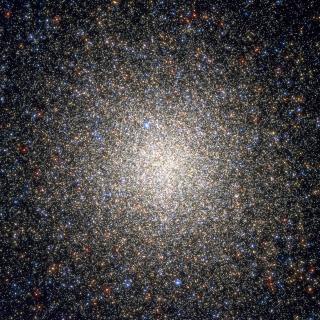Bibcode
Marino, A. F.; Milone, A. P.; Piotto, G.; Cassisi, S.; D'Antona, F.; Anderson, J.; Aparicio, A.; Bedin, L. R.; Renzini, A.; Villanova, S.
Referencia bibliográfica
The Astrophysical Journal, Volume 746, Issue 1, article id. 14 (2012).
Fecha de publicación:
2
2012
Revista
Número de citas
112
Número de citas referidas
91
Descripción
We present a chemical-composition analysis of 77 red-giant stars in
Omega Centauri. We have measured abundances for carbon and nitrogen, and
combined our results with abundances of O, Na, La, and Fe that we
determined in our previous work. Our aim is to better understand the
peculiar chemical-enrichment history of this cluster by studying how the
total C+N+O content varies among the different metallicity stellar
groups, and among stars at different places along the Na-O
anticorrelation. We find that the (anti)correlations among the light
elements that would be expected on theoretical grounds for matter that
has been nuclearly processed via high-temperature proton captures. The
overall [(C+N+O)/Fe] increases by ~0.5 dex from [Fe/H] ~-2.0 to
[Fe/H] ~-0.9. Our results provide insight into the
chemical-enrichment history of the cluster, and the measured CNO
variations provide important corrections for estimating the relative
ages of the different stellar populations.
Based on data collected at the European Southern Observatory with the
FLAMES/GIRAFFE spectrograph.
Proyectos relacionados

Vía Láctea y galaxias cercanas
El objetivo general del Proyecto es el estudio de la estructura, historia evolutiva y proceso de formación de galaxias a través de sus poblaciones estelares resueltas, tanto a partir de fotometría como espectroscopia. El proyecto puede dividirse en cuatro líneas principales: I. Historia de formación estelar en el Grupo Local. El objetivo de esta
Martín
López Corredoira